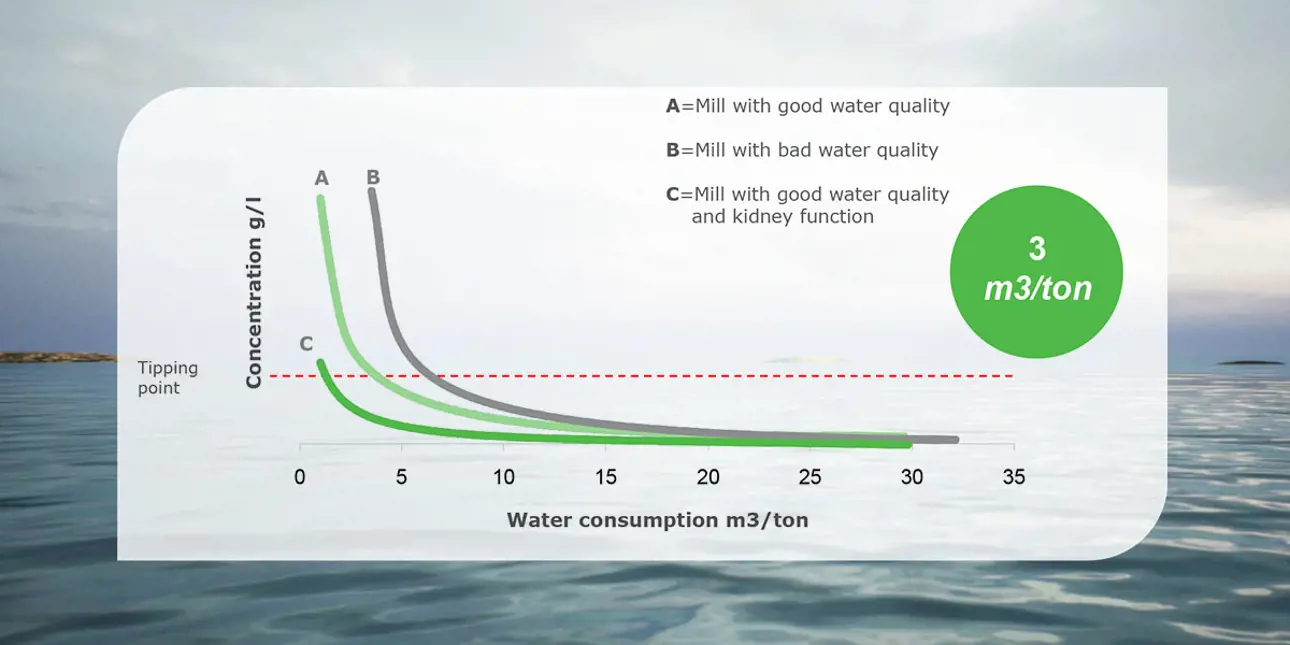Case: What is a feasible low level of freshwater consumption?
Aug 28, 2023
Each mill’s water process is unique and many parameters must be considered. In this case we compare three similar mills but with different prerequisites from a water perspective.

Mill A has a good water quality and Mill B has a bad water quality. Mill C has good quality, a kidney function in its process and excellent process control and surveillance of wet end chemistry.
In this diagram with the three mills represented the curves shows the enrichment of unwanted substances in the process, the Y-axis as function of the freshwater consumption at the X-axis.
A conclusion we can draw from these curves is that a mill with bad water quality experiences a higher concentration of unwanted substances in their process at a higher freshwater consumption than in a mill with good water quality. Meaning that Mill A, B and C will start to have process issues at different water consumption levels.
At a certain level of unwanted substances, the tipping point, we start to get:
- Build-up of dissolved material
- Higher degree of deposits (organic & inorganic)
- Risk for increased amount of web breaks and deposits in paper
- Higher consumption of chemical additives
- Higher corrosion rates
- Yankee coating problems
- Yankee wearing problems
- Risk of product degradation -smell
- High sensitivity for process disturbances
As a fact, if a certain mill can operate at freshwater level of for example 3 m3/ton it does not necessary mean that a mill with similar design and production is able to reach the same water consumption level in the long run. This is due to differences in the water chemistry. Each mill’s process chemistry is as unique as an individual. To be able to reach a low water consumption best mill design, best operating practices and best available technology for the conditions are required. As a rule of thumb, a mill with good water quality can reach a water consumption of around 3m3/ton with reasonable efforts.
Learn more about how Valmet can support you on your sustainability journey

